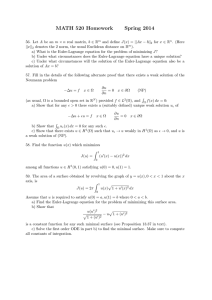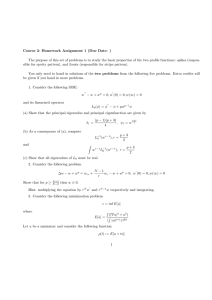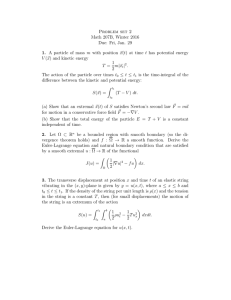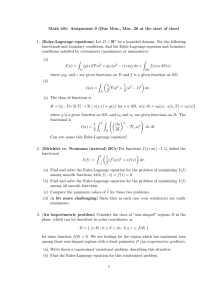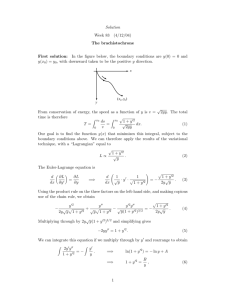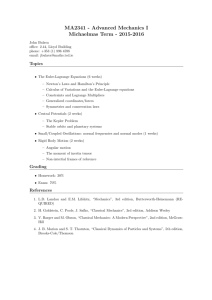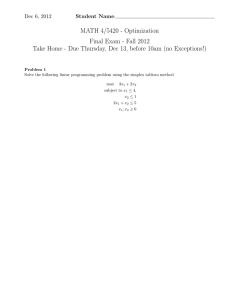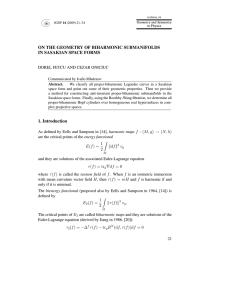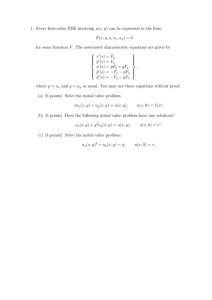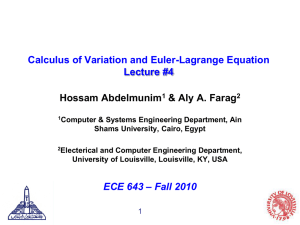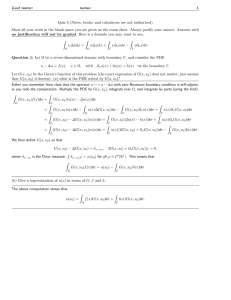MA342H: Homework #3 solutions Find the critical points of 1. Z
advertisement
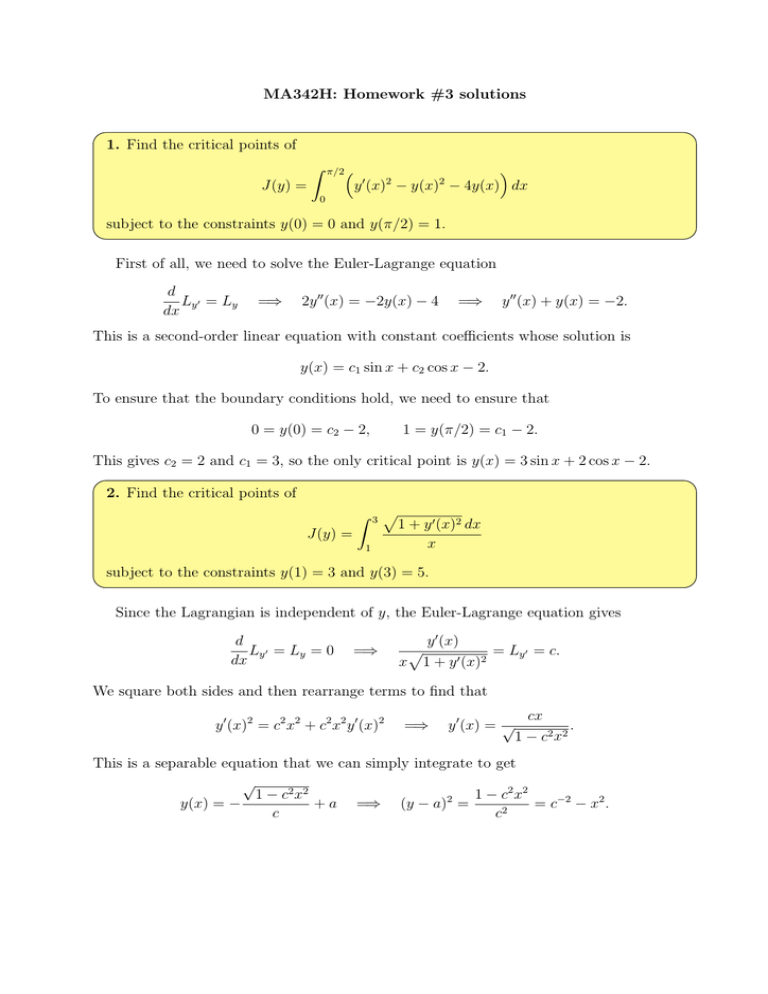
MA342H: Homework #3 solutions 1. Find the critical points of J(y) = Z 0 π/2 2 ′ 2 y (x) − y(x) − 4y(x) dx subject to the constraints y(0) = 0 and y(π/2) = 1. First of all, we need to solve the Euler-Lagrange equation d Ly ′ = Ly dx =⇒ 2y ′′ (x) = −2y(x) − 4 =⇒ y ′′ (x) + y(x) = −2. This is a second-order linear equation with constant coefficients whose solution is y(x) = c1 sin x + c2 cos x − 2. To ensure that the boundary conditions hold, we need to ensure that 0 = y(0) = c2 − 2, 1 = y(π/2) = c1 − 2. This gives c2 = 2 and c1 = 3, so the only critical point is y(x) = 3 sin x + 2 cos x − 2. 2. Find the critical points of J(y) = Z 3 1 p 1 + y ′ (x)2 dx x subject to the constraints y(1) = 3 and y(3) = 5. Since the Lagrangian is independent of y, the Euler-Lagrange equation gives d Ly ′ = Ly = 0 dx =⇒ y ′ (x) x p 1 + y ′ (x)2 = Ly′ = c. We square both sides and then rearrange terms to find that y ′ (x)2 = c2 x2 + c2 x2 y ′ (x)2 =⇒ y ′ (x) = √ cx . 1 − c 2 x2 This is a separable equation that we can simply integrate to get √ 1 − c 2 x2 1 − c 2 x2 y(x) = − + a =⇒ (y − a)2 = = c−2 − x2 . 2 c c According to the given boundary conditions, we must also have (3 − a)2 + 1 = c−2 = (5 − a)2 + 9 =⇒ =⇒ a2 − 6a + 10 = a2 − 10a + 34 4a = 24. In particular, a = 6 and c−2 = 10, so the only critical point is √ √ √ 1 − c 2 x2 y(x) = a − = a − c−2 − x2 = 6 − 10 − x2 . c 3. Find the critical points of J(y) = subject to the constraints Z 1 x · y(x) dx = 1, Z 1 y ′ (x)2 dx 0 y(0) = 0, y(1) = 1. 0 The critical points of I(y) = R1 0 L(x, y, y ′ ) = xy x · y(x) dx satisfy the Euler-Lagrange equation =⇒ d Ly ′ = Ly dx =⇒ 0 = x, so this functional has no critical points. The critical points of J(y) − λI(y) satisfy L(x, y, y ′ ) = (y ′ )2 − λxy =⇒ d Ly ′ = Ly dx =⇒ 2y ′′ (x) = −λx. Once we now integrate this equation twice, we find that y ′′ (x) = − λx 2 =⇒ y ′ (x) = − λx2 +a 4 =⇒ y(x) = − λx3 + ax + b. 12 The condition y(0) = 0 implies that b = 0 and the condition y(1) = 1 implies that 1=− λ +a 12 =⇒ λ = 12(a − 1). In view of the integral condition I(y) = 1, we must also have Z 1 λ λx4 a a−1 a 2a + 3 2 − 1= + ax dx = − + = − + = . 12 60 3 5 3 15 0 This gives a = 6 and λ = 60, so the only critical point is y(x) = −5x3 + 6x. 4. Find the critical points of J(y) = Z 1 ′ 2 ′ y (x) + y(x)y (x) + 4y(x) dx. 0 First of all, we need to solve the Euler-Lagrange equation d Ly ′ = Ly dx =⇒ 2y ′′ (x) + y ′ (x) = y ′ (x) + 4 =⇒ y ′′ (x) = 2. This equation can be easily integrated twice to give y ′′ (x) = 2 =⇒ y ′ (x) = 2x + a =⇒ y(x) = x2 + ax + b. In view of the natural boundary conditions, we must also have 0 = Ly′ = 2y ′ (x) + y(x) = 2(2x + a) + x2 + ax + b when x = 0, 1. This gives 2a + b = 0 = 3a + b + 5, so it easily follows that a = −5 =⇒ b = −2a = 10 =⇒ y(x) = x2 − 5x + 10.
